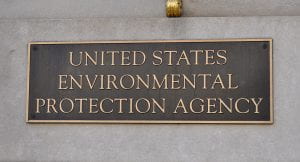In the 2021 case West Virginia v. Environmental Protection Agency (EPA), the majority opinion, authored by Chief Justice John Roberts, formulated a new standard for agency regulation review. This new standard is called the “major questions doctrine.” The major questions doctrine (MQD) presumes that, without clear and explicit language, Congress does not intend to allow administrative agencies to have authority over topics of political and economic significance that would have a “transformative impact on the regulatory authority.” This functions as a counterpart to Chevron deference, a standard used since the decision in Chevron v. NRDC in 1984, which states that when there is an ambiguity in a statute detailing the powers of an administrative agency, courts will defer to the reasonable interpretation of the agency on whether or not they have the authority to engage in certain actions. While it is arguable the MQD clarifies Chevron deference and is more precise about the powers of the administrative state, some scholars have a more concerned outlook on the doctrine’s implications and execution.
These sinister implications mean that the MQD is not a helpful guide on what administrative agencies can and cannot do; it is instead a tool used to weaken the ability of agencies to promulgate substantial policies, and it inserts courts into arenas where they are not best suited to be making final decisions. Indeed, the majority in Chevron ponders the idea that Congress leaves certain decisions to administrative agencies due to their expertise in the field, and that “judges are not experts in the field” that most agencies work under in their daily operations.[1] Such expertise was not considered by the Roberts Court in Biden v. Nebraska (the student loan case), where the Secretary of Education has clear expertise in issues pertaining to federal student loans. In essence, it is a gross abuse of power by the courts. It does not engage in checks and balances with the executive branch, but rather allows the courts to control the destiny of the administrative state. This is that will be consequential in environmental law specifically and administrative law generally.
While policies of other agencies such as the Department of Education and the Occupational Safety and Health Administration have been struck down under the MQD,[2] it is safe to say that the most high-profile MQD cases from the Supreme Court are about the authority of the EPA. Presently, the MQD is a tool used to attack various important environmental policies such as the Clean Air Act (CAA) and Clean Water Act (CWA).[3] Arguably, the rulings in West Virginia v. EPA and Sackett v. EPA are some of the most detrimental cases pertaining to administrative authority in the history of the Court. Both West Virginia and Sackett limit the EPA’s authority under the CAA and CWA respectively. To truly understand the MQD and how it impacts future cases, one must examine its origins.

West Virginia v. EPA
The first majority ruling to explicitly outline the MQD was in West Virginia v. EPA. This case determined the EPA’s authority to regulate greenhouse gases. The 6-3 majority, authored by Chief Justice Roberts, ruled that it was not the intent of Congress to grant this authority to the agency. There are two primary problems with the opinion. First, the opinion implies that for administrative agencies to do anything, Congress must give them authorization to do so. This is simply an unreasonable expectation: Congress is incapable of determining the full scope of every environmental problem for the foreseeable future. This is why the statutes granting administrative authority must be precise enough to give the agency appropriate guidance, but also not be too specific so as to limit the ability of agencies to make immediate changes when emergencies and crises arise. With the MQD, there is no balance of power: Congress and the courts dictate what administrative agencies can and cannot do, and the executive branch must work around that.
Sackett v. EPA
While Sackett does not cite the MQD explicitly, it is emblematic of the consequences of such a precedent. In the opinion, Justice Samuel Alito (along with the other four justices in the majority) miraculously becomes an expert on what should and should not be considered “waters of the United States.” Not only is this a gross overestimation of the ability of the Justices to make these kinds of determinations, but it is also an improper use of judicial authority. These are questions that should be left to the experts at the EPA, rather than Justices who, in comparison, have very little experience in environmental law. Instead of trusting the experts appointed to administrative agencies, the Court steps in to write an opinion that consequently provides help to polluters and makes the authority of administrative agencies unclear. The hubris of the majority in Sackett will have dire consequences when it comes to the health and safety of American waters.
The Future of Administrative Agency Authority
Even though Chevron deference is still alive, it is not unreasonable to predict that it will soon be replaced by the MQD. Indeed, the Supreme Court will be hearing the case Loper Bright Enterprises v. Raimondo sometime in 2024. Realistically, the Court may overturn Chevron, thereby making the MQD the official precedent of administrative agency authority. This means that the future of administrative agencies like the EPA, and thus the wellbeing of our environment, will lie in the hands of Justices John Roberts, Samuel Alito, and Neil Gorsuch, all of whom are critical of the administrative state and have spent their careers weakening it. Without Chevron deference, the ability of EPA to promulgate meaningful environmental policies is difficult at best and impossible at worst.
[1] Chevron v. NRDC, 467 U.S. 837, 865 (1984).
[2] See (National Federation of Independent Business v. Department of Labor, Occupational Safety and Health Administration) https://www.supremecourt.gov/opinions/21pdf/21a244_hgci.pdf; https://www.supremecourt.gov/opinions/22pdf/22-506_nmip.pdf (Biden v. Nebraska).
[3] See (Sackett v. EPA) https://www.supremecourt.gov/opinions/22pdf/21-454_4g15.pdf ; (West Virginia v. EPA) https://www.supremecourt.gov/opinions/21pdf/20-1530_n758.pdf.


Great blog! These justices pretend to be fearful of unelected officials making decisions when they themselves are unelected. SCOTUS removing protection of our wetlands is outrageous 😡